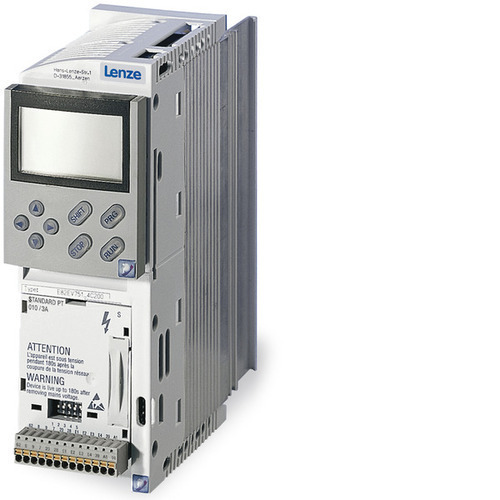Posted on 6th Jun 2024

In the realm of industrial automation, the synergy between Variable Frequency Drives (VFDs) and robotics is reshaping manufacturing processes, driving efficiency, and precision to unprecedented levels. VFDs, known for their ability to regulate motor speed and torque, play a pivotal role in enhancing the performance of robotic systems. In this article, we explore the symbiotic relationship between Lenze drive and robotics, uncovering how their integration is revolutionizing modern automation.
Variable Frequency Drives (VFDs) are electronic devices that control the speed and torque of electric motors by adjusting the frequency and voltage of the power supplied to them. In robotics, VFDs serve as the powerhouse behind precise motion control, enabling robots to execute tasks with accuracy and agility. By varying the motor speed in response to changing load demands, VFDs ensure smooth and efficient operation of robotic arms, manipulators, and other motion systems.
The integration of VFDs into robotic systems offers several key advantages:
Enhanced Precision: VFDs enable fine-tuned control over motor speed and torque, allowing robots to execute tasks with unparalleled precision and repeatability.
Flexibility and Adaptability: VFDs support dynamic speed adjustments, enabling robots to adapt to changing process conditions and perform a wide range of tasks with varying speed requirements.
Energy Efficiency: By optimizing motor speed based on load demand, VFDs help conserve energy and reduce operating costs in robotic applications.
Smooth Motion Profiles: VFDs provide smooth acceleration and deceleration profiles, minimizing mechanical stress and wear on robotic components, thereby extending their lifespan.
Synchronization Capabilities: Advanced VFDs offer synchronization features, allowing multiple motors to operate in perfect harmony for coordinated motion control in multi-axis robotic systems.
VFDs find application across various robotic systems and industries, including:
Pick-and-Place Operations: VFDs enable robots to precisely control the speed and trajectory of end-effectors for accurate pick-and-place operations in assembly and packaging tasks.
Material Handling: VFD-controlled conveyor systems facilitate seamless material transfer and sorting in warehouse automation and logistics applications.
Welding and Cutting: VFD-driven robotic arms deliver precise motion control for welding and cutting processes, ensuring high-quality and consistent results.
CNC Machining: VFDs regulate spindle speed and feed rates in CNC machines, optimizing cutting performance and surface finish in machining operations.
When integrating VFDs into robotic systems, several factors should be considered:
Compatibility: Ensure compatibility between the VFDs and robotic controllers, selecting models with suitable communication interfaces and protocols for seamless integration.
Programming and Configuration: Develop control algorithms and motion profiles tailored to the specific requirements of the robotic application, optimizing performance and efficiency.
Safety: Implement safety measures, such as emergency stop circuits and protective barriers, to ensure the safe operation of robotic systems equipped with VFDs.
The integration of Variable Frequency Drives (VFDs) available on CM Industry Supply Automation into robotic systems represents a paradigm shift in industrial automation, empowering robots with enhanced precision, flexibility, and efficiency. By harnessing the power of VFDs, manufacturers can unlock new levels of productivity and competitiveness in an increasingly automated world. As technology continues to advance, the synergy between VFD drives and robotics will play a pivotal role in shaping the future of manufacturing and beyond.